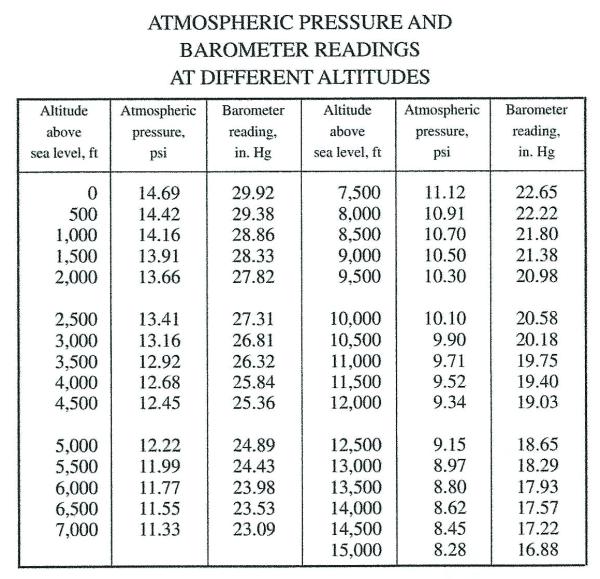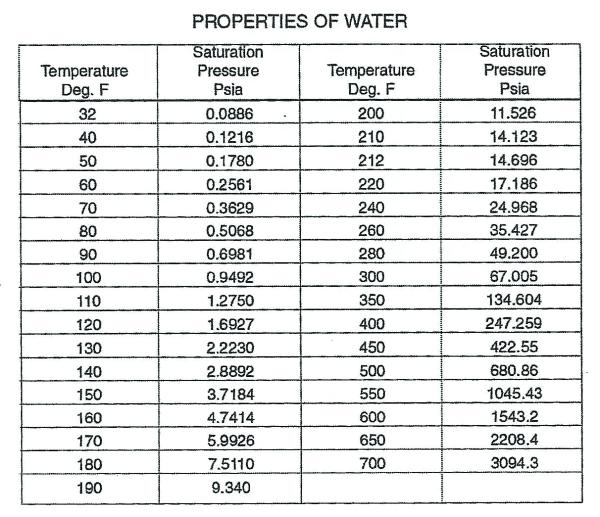Do the questions in the title seem like simple questions? There are many things that confuse the issue including air compressor condition, controls as applied, interconnecting pipe size and configuration and effective storage.
All of these have been covered in many technical compressed air papers and articles. The topic many don’t use or understand is how to calculate the actual value of these initial questions at the operating sites and conditions.
CFM is the flow rate of compressed air in cubic feet per minute – but there are many variations on CFM – and these must be considered to clarify the issue.
Consider: Has anyone ever said to you, “We have plenty of compressed air except during the summer and especially with high humidity.”
OR
“Ten years ago, we had plenty of compressed air. Now, after installing a chiller system and some pumps, it gets pretty hot in the compressor room, and we are often short of air. All the compressors seem to be running fine.” In this case, when investigating the room ambient “pressure” was almost 1.5psia lower than the outside psia (pounds per square inch ambient) – which is known as “Negative Room Pressure”.
These tales could go on and on, but let’s get your thoughts into the “common sense mode”.
There are two CFM values we want to identify – the OEM’s test data for CFM and reconcile that to an equivalent volume at the operating site conditions.
Most OEM’s (Original Equipment Manufacturer) use specific accepted standard conditions. In most of North America and many other countries, the CAGI (Compressed Air & Gas Institute) standard is used. There are other standard conditions, which can mathematically be reconciled to another standard. It is very important to know what standard operating conditions the air compressor manufacturer used. The standard operating CAGI conditions are:
- Inlet Pressure to the air compressor inlet (14.5 psia)
- Ambient Temperature of the inlet air (68°F)
- We use absolute Fahrenheit in the calculation which adds + 460 to 68°F to equal 528 Rankine. (If you use Celsius there is a different constant).
- Relative humidity – 0% RH
Anything that negatively affects the inlet air pressure, temperature, and relative humidity at the actual site operating conditions will affect the amount of actual available air volume (CFM) to use.
Inlet Pressure, Inlet Temperature and Relative Humidity
Inlet Pressure: The standard altitude chart (Table 1) psia is not a feasible fixed value, it goes up and down with climate changes.

Table 1
Inlet Temperature: Remember High School Physics – hot air weighs less (lower pressure psia) than colder air. When the air is hotter (summer) the temperature goes up and you have less available weight of air per CFM to do the work.
Lower inlet pressure will always have a negative effect on the actual delivered compressed air to the system. Ambient temperature has a direct effect on the reconciliation – hot air weighs less and this modifies the inlet psia relative to the standard.
Relative humidity will not directly affect the inlet pressure. The water vapor that comes in with the inlet air will be removed from the delivered air in the after cooler and dryer and this will reduce the volume of available, usable air before it gets to the system. To calculate this effect, we go to Saturation Pressure Table, which gives a value in psia to adjust for this removal of water vapors as available air. Hot air holds more water vapor, in vapor form, than cold air. The saturation pressure, at the ambient temperature, is multiplied by the relative humidity (RH%) to give the net result of actual inlet pressure in psia to the air compressor.

Table 2
Reconciling Standard Conditions to Operating Site Conditions
There are often things that all air compressor OEM’s may or may not include in their published numbers. For example most technical people, in the compressed air arena, use a 0.3 psia reduction for a clean inlet air filter. The true number will only be available by measurement and you can assume the loss at site will be higher with older inlet filters. When gathering applicable data, remember to measure the pressure below 14.5psia. You will need a vacuum gauge and when possible, try to measure in or at the inlet valve.
Some key terminology before we show a proper path for converting acfm to scfm.
- ICFM ¬– Inlet air volume depending on the type of air compressor. This value may or may not equal delivered air.
- ACFM – Ambient air volume in this context is the same as ICFM. This is not relevant in this discussion.
- ACFM/FAD - Actual CFM delivered at the air compressor discharge at inlet conditions. These are basically interchangeable in this instance.
- SCFM – The volume of the flow of compressed air in cubic feet/minute – reconciled back to a specific set of “standard conditions”. This is a very critical step, in proper equipment selection and application, because the air consuming equipment rate their products demand in SCFM. When planning, be sure you have identified the proper converting standards to the compressed air using equipment. Once that is done, you then only must reconcile the standard conditions to the operating site conditions.
Impact of Altitude on the Operation of Air Powered Equipment
Table 3 will give some idea of what impact the lighter/lower pressures of higher (than sea level) altitude air will have on most compressed air powered equipment. These numbers are calculated to compare the sea level demand in weight of compressed air per CFM. The multiplier shown identifies what is required to deliver the same weight per CFM of compressed air, at the altitude, as at sea level.
|
Elevation (FT) |
1,000 FT |
2,000 FT |
3,000 FT |
4,000 FT |
|
Multiplier |
1.000 |
1.065 |
1.100 |
1.138 |
|
5’000 FT |
6,000 FT |
7,000 FT |
9,000 FT |
10,000 FT |
|
1.174 |
1.213 |
1.255 |
1.298 |
1.391 |
Table 3: Altitude Correction Factors (vs. sea level). Example: Most air powered tools and equipment have the compressed air consumption rated at SCFM. Normally this would be at sea level and CAGI standard conditions unless otherwise stated. Under these conditions 600scfm at sea level will require a compressed air supply of about 753 scfm at 7000 feet elevation (Flagstaff, AZ). (600 x 1.255 = 753).
Summary Converting ACFM to SCFMscfm = acfm x (Pa-(PP xRH))/Ps x Ts/TaWhere
Ambient Site Conditions
(Taken from table 2) |
Example: Convert 1,050 ACFM to SCFM
Scfm = (acfm x Pa-(PP x RH))/((Ps) 14.5 psia) x Ts/Ta
Scfm = (1050acfm x (14.2-(0.698))/14.5 x (68°F+460)/(90°F+460)
Scfm = (1050acfm x 13.78)/14.5 x (528° Rankin)/(550° Rankin) = 958.7scfm
The air compressor that produces 1050 acfm actually delivers 958.7 scfm at the site operating conditions.
Final Note on Converting ACFM to SCFM: Calculate the operating site conditions scfm value for 100 scfm. The resultant answer will represent a multiplier for any future acfm to scfm conversion under the same conditions.
For Example: (100 acfm x 13.78)/14.5 x (528 ° R)/(550° R) = 91.2 = .912% multiplier
Tips on Measuring Operating Site Conditions
It is best to measure the actual inlet PSIA below the inlet filter at full load with a vacuum gauge. I personally prefer a high-quality digital gauge. Be sure the gauge has the range to cover the expected volume. If this is not feasible, use the vacuum gauge in the surrounding area at the inlet. Equipment operating rooms may have negative pressure. Check for negative pressure by also using your gauge to check outside of the room.
Measure the temperature at the inlet valve. If you don’t have an RH meter, check the morning weather data or? Lastly, compare the standard data to the measured data and convert ACFM into SCFM.
|
Standard Inlet Conditions |
Operating Site Inlet Conditions |
|
Inlet press. 14.5 psia |
14.42 psia |
|
Inlet temp. 68°F |
90°F |
|
RH % 0 |
60 |
For more information contact Hank van Ormer, Technical Director, or Don van Ormer, Senior Auditor, AP Energy (formerly Air Power USA) at tel: 740.862.4112, Visit https://apenergy.com.
To read similar articles on Compressed Air System Assessments please visit
https://www.airbestpractices.com/system-assessments.
Visit our Webinar Archives to listen to expert presentations on Compressed Air Fundamentals at https://www.airbestpractices.com/webinars.




